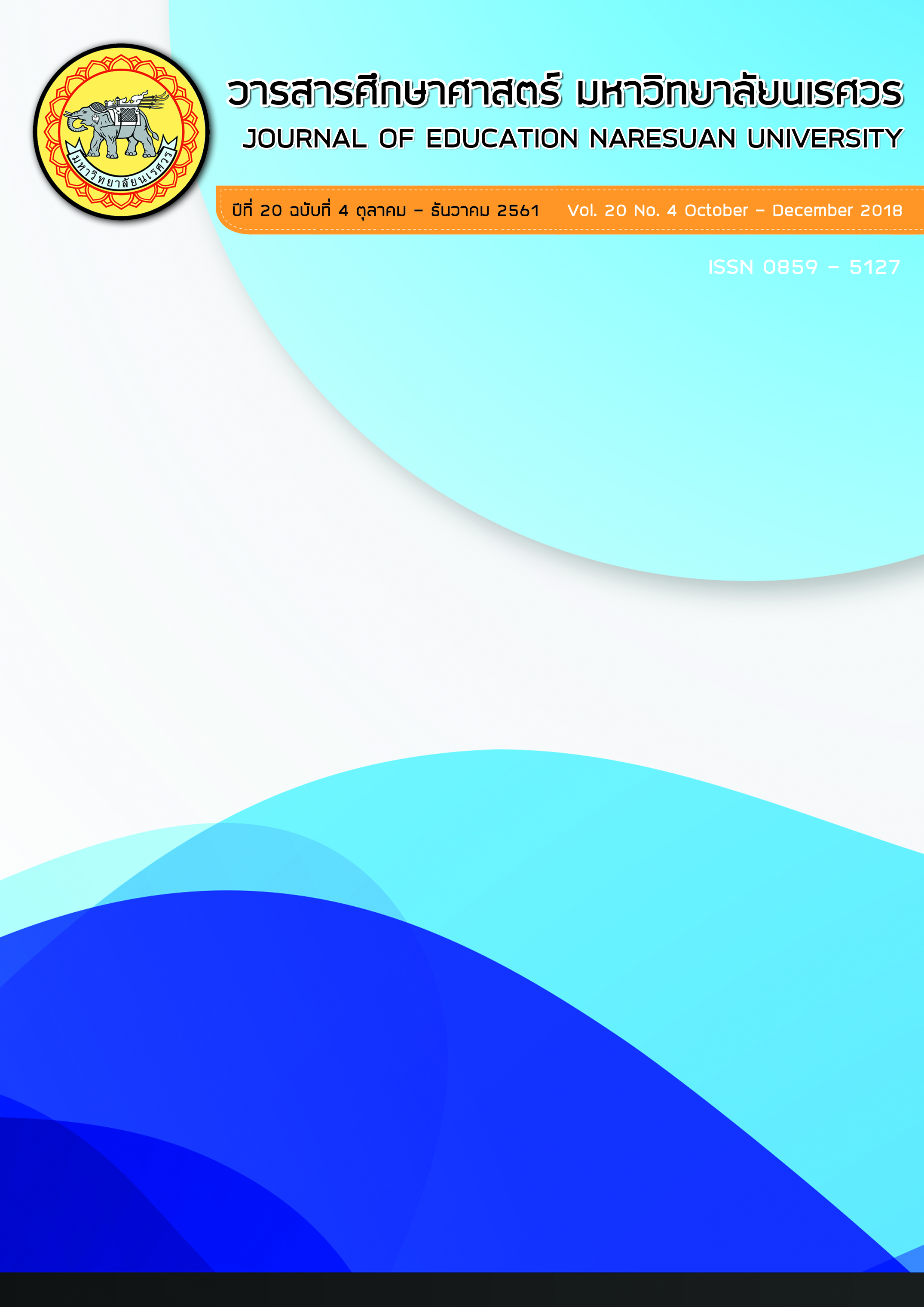เครื่องมือดิจิทัลเพื่อการเรียนรู้ : วิถีแห่งการศึกษายุคดิจิทัล; DIGITAL LEARNING TOOLS: WAYS OF DIGITAL EDUCATION ERA
Main Article Content
Abstract
การศึกษาในยุคดิจิทัล เป็นวิถีการเรียนรู้ผ่านเทคโนโลยีที่มีเครื่องมือดิจิทัลเพื่อการเรียนรู้เป็นเสมือนอาวุธสำคัญของผู้เรียนและผู้สอนในการเข้าถึงแหล่งความรู้และใช้สร้างสรรค์งานได้อย่างสะดวก เครื่องมือดิจิทัลเพื่อการเรียนรู้ เป็นโปรแกรมหรือแอพลิเคชั่นสำหรับการเรียนรู้ของบุคคลทั้งแบบเรียนรู้ด้วยตนเองหรือเรียนรู้แบบกลุ่ม ซึ่งผู้ใช้งานสามารถเข้าถึงด้วยการเชื่อมต่ออินเทอร์เน็ตผ่านคอมพิวเตอร์ แทบเล็ต หรือสมาร์ทโฟน สามารถแบ่งประเภทเครื่องมือดิจิทัลเพื่อการเรียนรู้ตามลักษณะการใช้งาน ออกเป็น 5 ประเภท ได้แก่ 1) เครื่องมือการจัดการเรียนการสอน ประกอบด้วย เครื่องมือสร้างบทเรียนอีเลิร์นนิ่ง ระบบการจัดการเรียนรู้ และเครื่องมือโต้ตอบในชั้นเรียน 2) เครื่องมือพัฒนาเนื้อหา ประกอบด้วย เครื่องมือพัฒนาเนื้อหา เครื่องมือจับภาพหน้าจอและจับภาพเคลื่อนไหวบนหน้าจอ และเครื่องมือแบบฟอร์มสำรวจ 3) เครื่องมือทรัพยากรบนเว็บไซต์ ประกอบด้วย เครื่องมือสืบค้นข้อมูลในอินเทอร์เน็ต เครื่องมือแหล่งทรัพยากรบนเว็บไซต์ เครื่องมือหลักสูตรออนไลน์บนเว็บไซต์ เครื่องมือข่าวและจัดการเนื้อหา และเครื่องมือบล็อกและเว็บไซต์ 4) เครื่องมือทางสังคม ประกอบด้วย เครื่องมือเครือข่ายทางสังคมและส่งข้อความ เครื่องมือการประชุมผ่านวิดีโอ เครื่องมือการใช้แฟ้มข้อมูลร่วมกัน และเครื่องมือการทำงานเป็นทีมและร่วมมือกัน และ 5) เครื่องมือส่วนบุคคลและพัฒนางาน ประกอบด้วย เครื่องมือสำนักงาน เครื่องมืออีเมล์ และเครื่องมือเพิ่มผลผลิตส่วนบุคคล
DIGITAL LEARNING TOOLS: WAYS OF DIGITAL EDUCATION ERA
Education in this digital era is based on learning via technology using digital devices, that facilitate both teachers and students in acquiring new knowledge and creative ideas. The digital learning tools can also be programs or applications used for either self learning or group learning. The users can access these tools with internet connection through computers, tablets or smart phones. The digital learning tools can be divided into 5 categories, including; 1) instructional tools: e-Learning authoring tools, Learning Management Systems and learning platforms and classroom response tools, 2) content development tools: content development tools, screen capture and screen casting tools and survey forms tools, 3) web resources tools: web browsers and search engines tools, web resources tools, web course platforms tools, news and curation tools and blogging and website tools, 4) social tools: social networks and messaging tools, video meeting tools, file sharing tools and team and enterprise collaboration tools, and 5) personal & professional tools: office tools, email tools and personal productivity tools
Article Details
The owner of the article does not copy or violate any of its copyright. If any copyright infringement occurs or prosecution, in any case, the Editorial Board is not involved in all the rights to the owner of the article to be performed.
References
Curtis Jay Bonk Donald J. Cunningham. (1998). Electronic collaborators: Learner-centered technologies for literacy apprenticeship, and discourse. USA: Lawrence Erlbaum Associates.
David A. Armstrong. (2011). Students’ perceptions of online learning and instruction tools: A qualitative Study of undergraduate students use of online tools. The Turkish Online Journal of Educational Technology, 10(3), 222-226.
Ibrahim ARPACI. (2017). The role of self-efficacy in predicting use of distance education tools and learning management systems. Turkish Online Journal of Distance Education, 18(1), 52-62.
Interactive Teaching in Languages with Technology. (2017). Digital tools. Retrieved October 13, 2017, from http://bit.ly/2h6ENUi
Jane Hart. (2017). Top 200 tools for Learning 2017. Retrieved January 6, 2018, from http://c4lpt.co.uk/top100tools/
Judi Moreillon. (2015). Increasing interactivity in the online learning environment: Using digital tools to support students in socially constructed meaning-making. TechTrends, 59(3), 41-47.
Meesuwan, W. (2014). Cloud computing for education. Journal of Education Naresuan University, 16(1), 149 – 157. (in Thai)
Megan Poore. (2013). Using social media in the classroom a best practice guide. Thousand Oaks: SAGE Publications.
Nada Dabbagh, & Helen Fake. (2017). College students’ perceptions of personal learning environments through the lens of digital tools, processes and spaces. Journal of New Approaches in Educational Research, 6(1), 28-36.
Stefano Za, Paolo Spagnoletti, & Andrea North-Samardzic. (2014). Organizational learning as an emerging process: The generative role of digital tools in informal learning practices. British Journal of Educational Technology, 45(6), 1023-1035.
Sungkawadee, R., & Keawurai, R. (2017). The development of e –learning courseware integrated with activities on facebook in the ways of living in the digital age course: The ethics of living in the digital era of living for bachelor degree students, Naresuan University. Journal of Education Naresuan University, 19(3), 133 – 146. (in Thai)
Tanya Joosten. (2012). Social media for educators: Strategies and best practices. US: Jossey- Bass.


